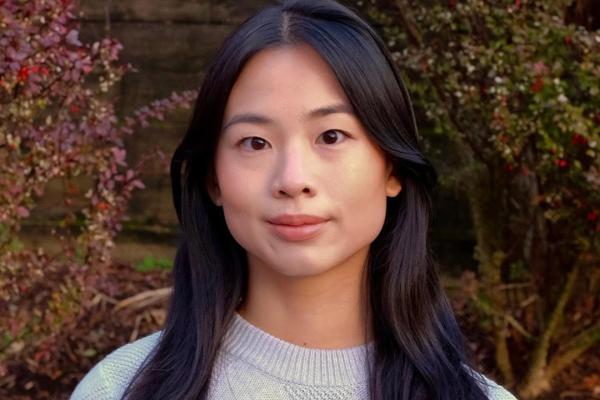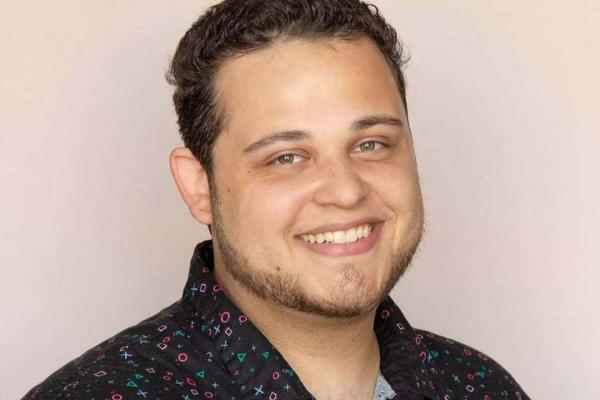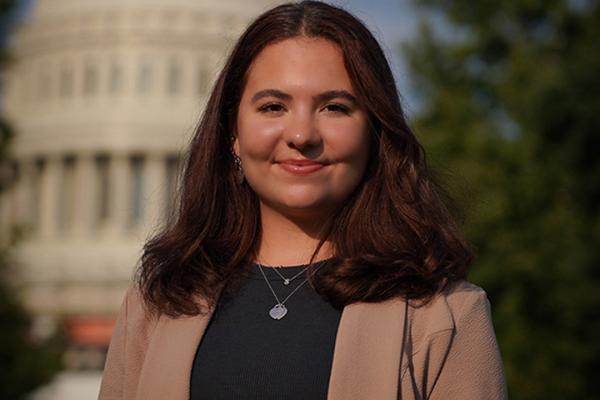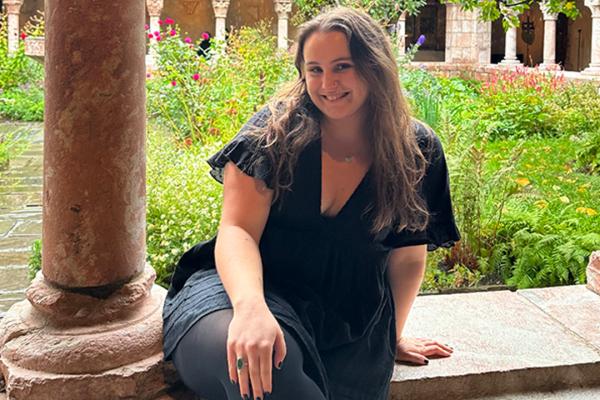Art History
BACHELOR OF ARTS | DUAL BACHELOR OF ARTS | COMBINED DEGREE | MINOR
Study art history among the vibrant museums and contemporary art galleries of our nation’s capital
The Art History Program at the Corcoran School of the Arts and Design is situated in the heart of the culturally rich city of Washington, D.C., providing students with unique opportunities to study the arts. Our students learn to apply visual and historical analyses to artworks, as well as incorporate relevant and current theoretical and methodological approaches to research. Our proximity to Washington’s many museums and galleries means that the permanent collections and exhibitions of some of the most important art institutions in the world often serve as the backbone of student coursework and study. Our curriculum covers a wide swath of the history of art, but has specific areas of focus in Renaissance, Baroque, Islamic, African, American and Modern and Contemporary art. Our rigorous and supportive scholarly program places special emphasis on developing individual students’ research and writing skills.
INFORMATION SESSIONS
Each academic year, we offer virtual information sessions led by faculty to help prospective students learn more about our programs, faculty expertise, and application process.
PROGRAM OPTIONS
We offer four programs to study art history at the undergraduate level: a bachelor of arts in art history; a dual bachelor of arts in art history and fine arts; a minor in art history; a minor in art history and fine arts. In addition, for those wishing to continue their studies at Corcoran, we offer a Combined BA/MA Degree in Art History.
Combined Degree
The combined BA/MA program offers undergraduate Art History majors excelling in their studies the opportunity to advance to graduate level coursework in their senior year and enter the MA program upon graduation.
The following requirements must be fulfilled while an undergraduate:
- The general requirements stated under Columbian College of Arts and Sciences.
- Required courses in art history – 33 credit hours consisting of a minimum of one course in six of the following seven categories: Ancient and Medieval; Islamic Spheres; Renaissance/Baroque; 18th/19th Century; Modern & Contemporary; Asia and the Indian Ocean; and Central and South America; an additional course in one of these categories; two (6 credits) Junior/Senior Seminars (4000-level and above), which may count towards the distribution requirements; and two electives, which may, with the prior approval of the Director of Undergraduate Studies, be taken in another department.
- Required course in studio arts – 3 credit hours of any studio arts course.
- Students take 9 credits of graduate art history course work (6000 level) during their senior year (one in the fall, two in the spring); these credit hours will count towards the BA degree and the MA degree.
How to apply:
Deadline: March 1 of Junior Year
- Statement of purpose: In an essay of 250 – 500 words, state your purpose in undertaking graduate study in your chosen field. Include your academic objectives, research interests, and career plans. Also discuss your related qualifications, including collegiate, professional, and community activities, and any other substantial accomplishments not already mentioned on the application. If you are applying for an assistantship, you should also describe any teaching experience you have had.
- Writing Sample
- Curriculum Vitae
- One Letter of Recommendation
- Unofficial Transcript
- Minimum 3.5 GPA overall, 3.7 in AH major
Submit complete application to:
Director of Graduate Studies, Art History
Corcoran School of the Arts & Design
Smith Hall of Art, 101
801 22nd Street, NW Washington, DC 20052
Where You’ll Go
Through the knowledge acquired in the classroom, experiences at GW, the guidance provided by our renowned faculty and the networking opportunities offered by internships in the city’s many art related institutions, art history graduates are well-equipped to enter careers in the arts. The GW Center for Career Services supplies resources to direct professional development after graduation, and graduates from our program have gone on to serve as curators, educators and more.
History of the Program
Courses in Art History at George Washington University were an early and significant component of the curriculum. Founded in 1821 and predating the Art History curricula of Princeton (1832), Yale (1869), and Harvard (1874), GW’s Art History program has evolved and reached maturation, while vigorously sustaining its core mission of providing students an exceptional education.
Visiting Artists & Scholars Committee
The Visiting Artists and Scholars Committee (VASC) is a student-run organization that invites respected scholars and artists to present public lectures. The committee typically brings four to six speakers to campus each year. All VASC lectures and events are free and open to the public.
ALUMNI HIGHLIGHTS
Brigit O’Malley, BA Art History, Class of 2018
Brigit O’Malley is an art history major who loves anthropology, as well as architecture and painting. O’Malley demonstrates how she combines her various academic interests with her love of French culture through our Art History program.
Caitlin Chan (BA ’21) graduated from GW with majors in Art History and International Affairs. From 2021 to 2022, she worked as a research intern at Christie’s New York in the Post-War and Contemporary Art department. She is currently a Ph.D. candidate at Stanford University, working broadly on modern and contemporary art. At Stanford, Caitlin is a recipient of the Leadership in Inclusive Teaching Fellowship and the Jeanette and William Hayden Jones Fellowship in American Art and Culture.
Elizabeth Block (BA ’94) recently published Power and Vanity: The History and Power of Hairdressing (MIT Press, 2024). Block, a senior editor in the Publications and Editorial Department at the Metropolitan Museum of Art, combs through the complex cultural meaning of 19th century hair. Against a backdrop of high society salons—then called “hair rooms” or “saloons”—she uncovers the stories of often Black and mixed-race business owners forging independent paths in the burgeoning hair industry. Read more.
Congratulations to Joseph Albanese (BA ’17) who will join the faculty of DePauw University in fall 2024 as Assistant Professor of Art & Art History. Since graduating from GW with a triple major (and many classes with Prof. Barbara von Barghahn), Dr. Albanese received a MA from the Courtauld and then a PhD from the University of California, Berkeley. His research, which has been supported by Fulbright and Renaissance Society of America fellowships, focuses on Viceregal Peruvian art.
RECENT ALUMNI SPOTLIGHTS
Every year, Corcoran hosts NEXT, a year-end celebration of art and scholarship. In 2024, Art History B.A. students like Serena Martin presented talks based on their senior theses. Serena, a double major in International Affairs and Art History, explored representations of Queen Elizabeth I, the “Virgin Queen,” to show how women negotiate patriarchal constraints in order to wield power. Also in the spring of her senior year, Serena, with Professor Rachel Pollack, co-curated a micro-exhibition at the GW Textile Museum on 17th-century English embroidered clothing items.
Jason Rosenberg (BA ’23, MA ’24) pursued a combined BA/MA degree in art history, with the master plan of going on to law school (he began Duke University School of Law in fall 2024). Based on research conducted during his senior year, Jason completed his Master’s Qualifying Paper on the implications of the recent Supreme Court decision, Andy Warhol Foundation for the Visual Arts, Inc. v. Goldsmith. While at GW, Jason worked as a Graduate Teaching Assistant and interned at the Phillips Collection and an art appraisal firm.
Abby Osborne (BA ‘24) double majored in art history and political communication. She earned honors for her senior thesis exploring the photography of Collier Schorr, whom she first learned about in Professor Alexander Dumbadze’s seminar on the 1990s. Abby brought to bear her extensive knowledge of New Queer Cinema to argue that Collier’s series South of No North marks a turning point catalyzed, in part, by film. Abby interned at the Hirshhorn Museum and Sculpture Garden and The Phillips Collection while at GW.
STUDENT WORK
See examples from past classes’ culminating projects and work.
News Highlights

The Korean Times covers Corcoran exhibit Ecriture with the Body
October 6, 2025
Congratulations to Prof. Jung-Sil Lee (Corcoran Art History) and guest curator Prof. Koh Dong-Yeon.
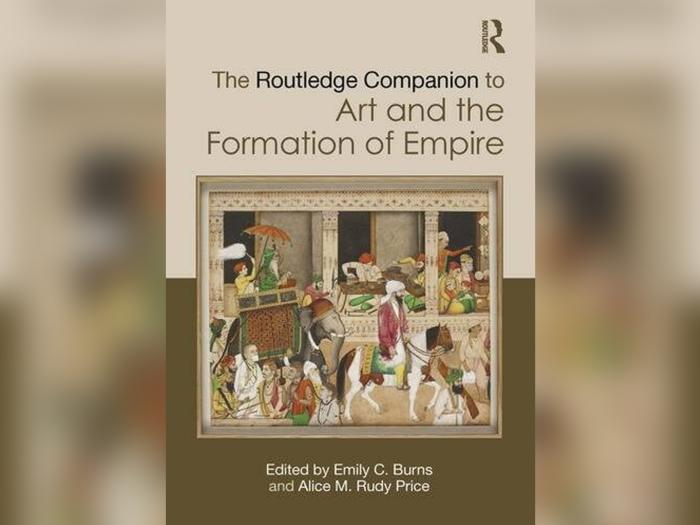
Art History Faculty and Alum Collaborate on New Anthology
July 30, 2025
Art history professor Clement Akpang contributed an essay to “The Routledge Companion to Art and the Formation of Empire,” edited by Corcoran alum Emily C. Burns (MA Art History ’05). Akpang’s chapter, “Beyond the Modernist Canon of Involuntary Aesthetic Colonization: Aina Onabolu’s Mimicry as Rejection of Colonial Anti-modernity, 1900–1930,” explores the Nigerian artist’s challenge to colonial narratives in early 20th-century art.
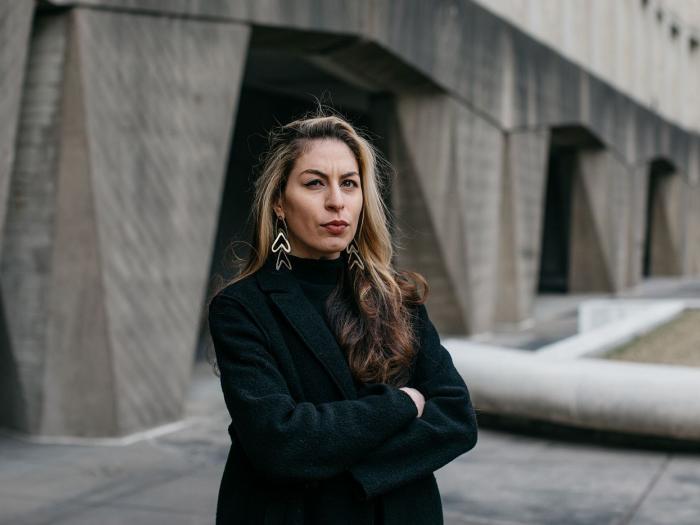
Corcoran Alum Examines Sculptural Response to Protest and Oppression
July 1, 2025
In a powerful essay, Corcoran alum Dr. Jordan Amirkhani reflects on the Hamiltonian Artists exhibition Sticky Gum Flat, where works by emerging artists explore public space, protest, and quiet defiance through sculptural form.




